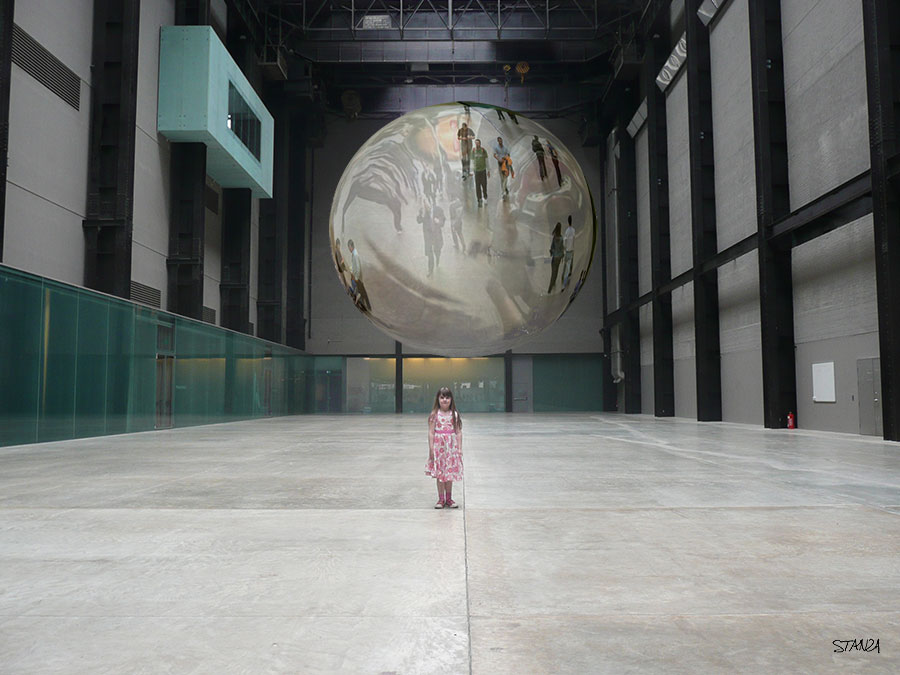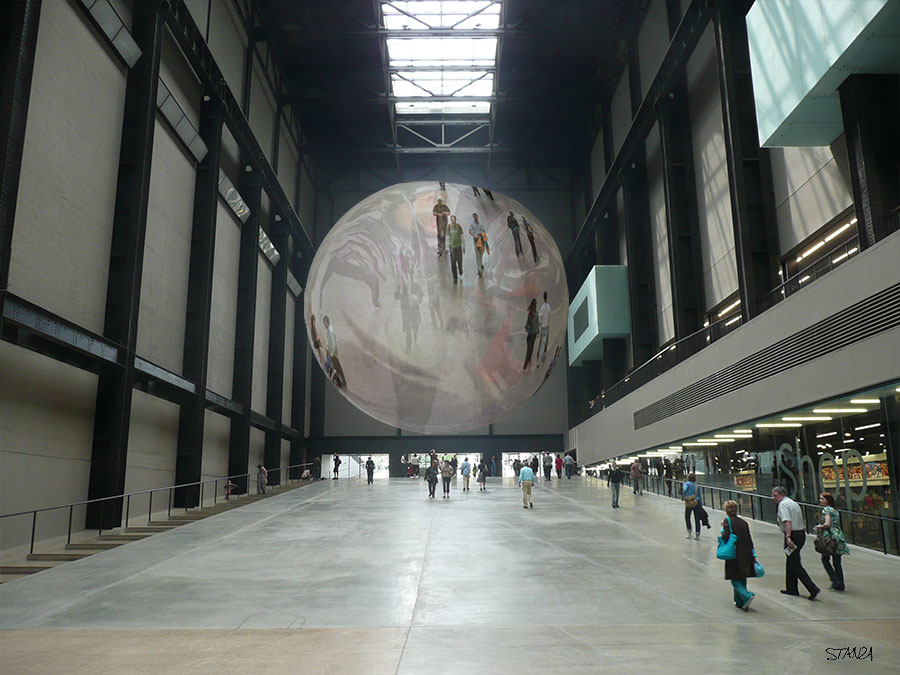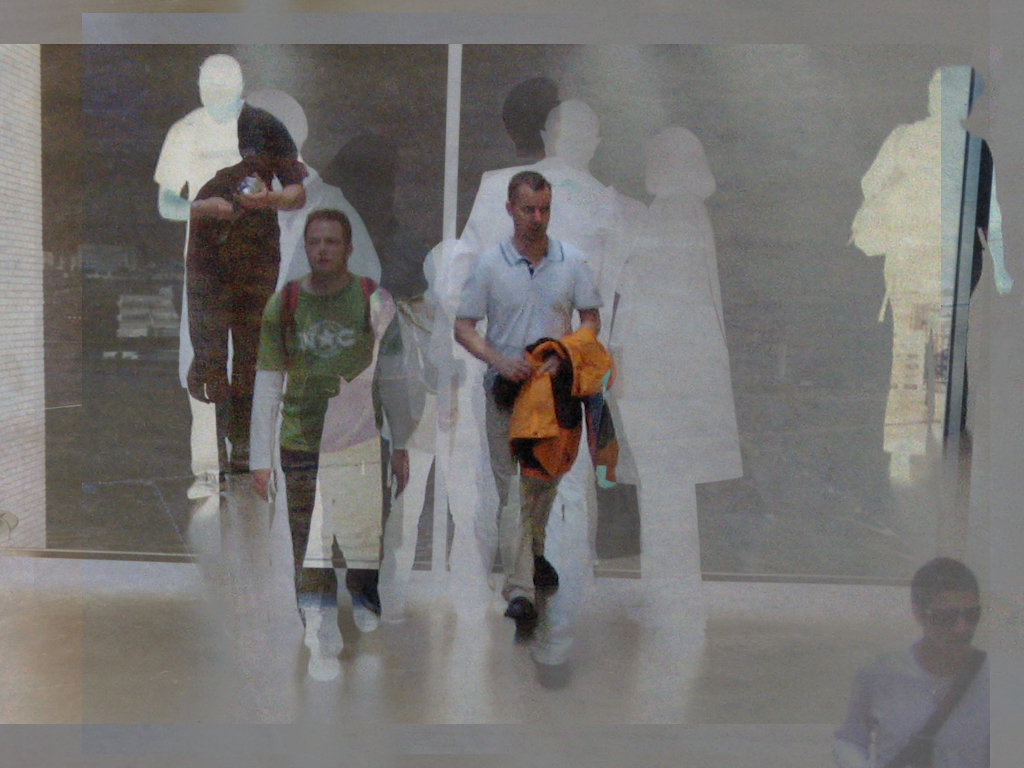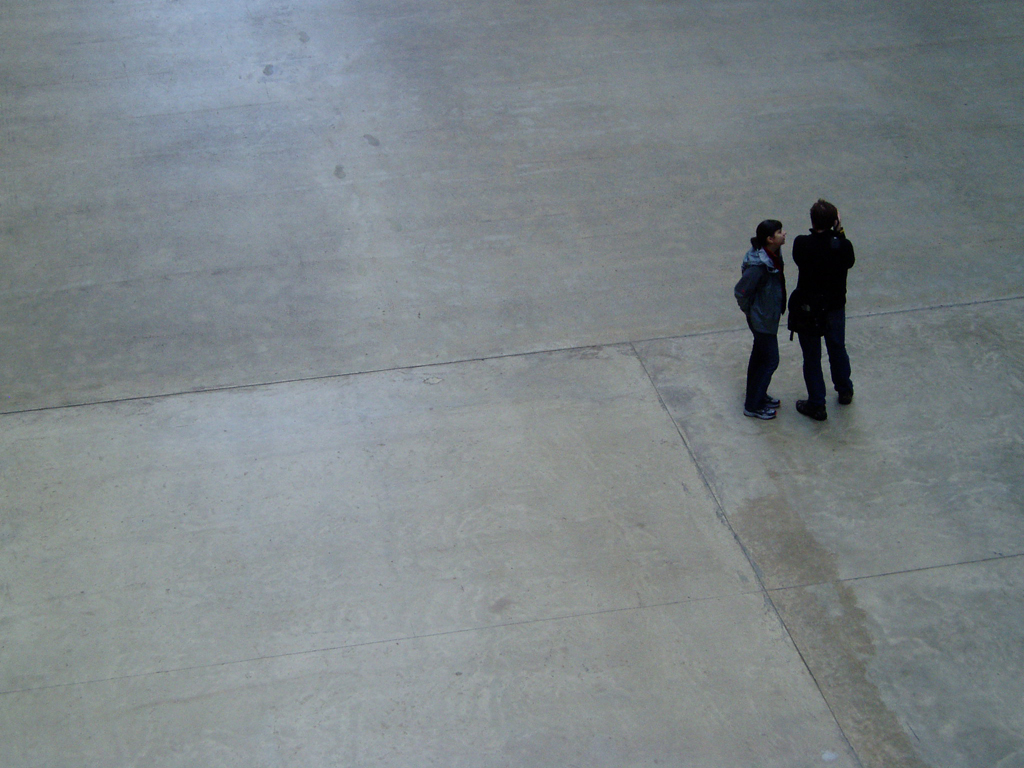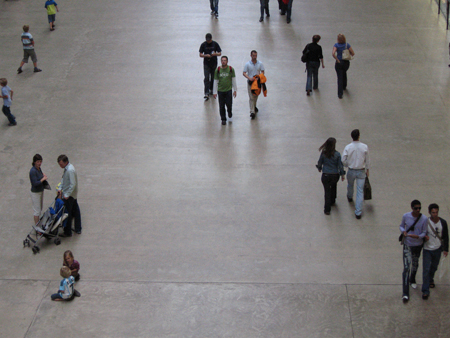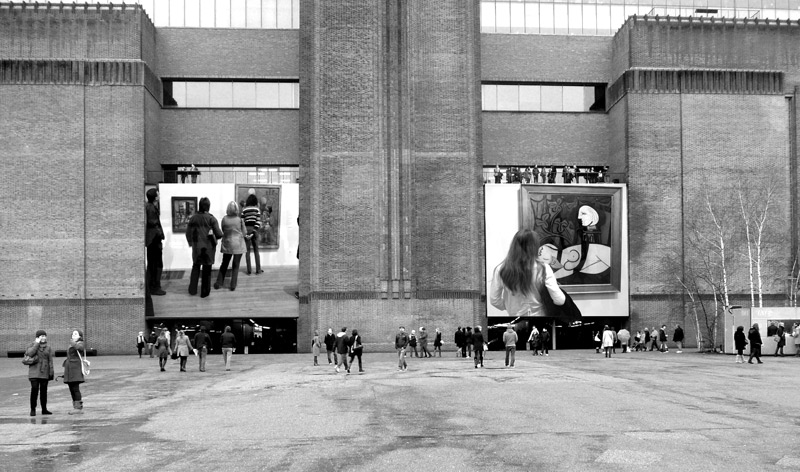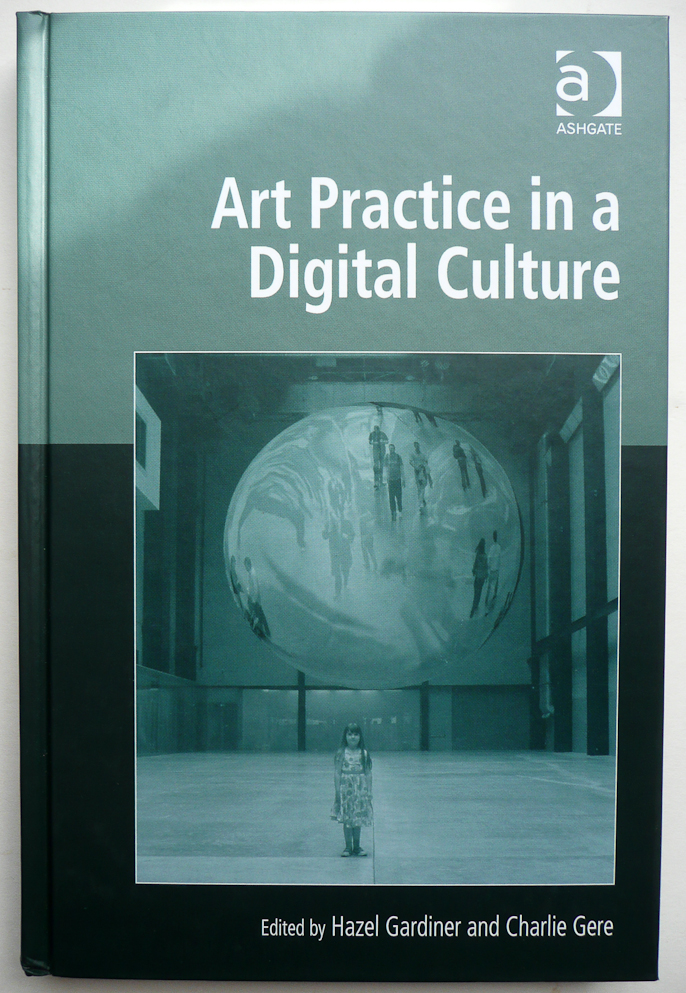|
||
Test image 2005. In County Hall London |
||
Image in development. 2006 |
||
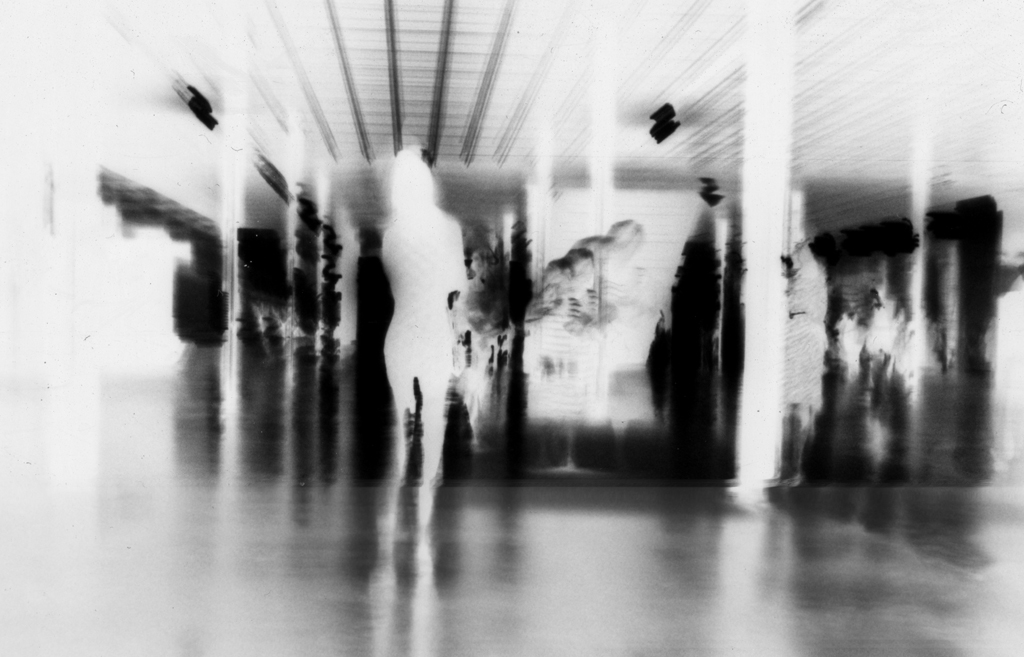 |
||
image 2002 Pilgrims (c) stanza Art as practice based research
In a series of seminars, "Tate Encounters Research in Progress", at Tate Modern, the question was asked "To what extent does the web visitor have agency to 'act back' or to 'author' their interactions with museum websites? How is new media being conceived as an 'interpretative' or 'augmenting' dimension of the museum experience and with what effects? Public Domain will access and analyze available data relating to gallery spaces and public interactions to make informed, interpretive media artworks by deploying wireless sensor networks to gather various types of data in the gallery and to collect (temperature, humidity, barometric pressure, noise, proximity measuring). The information will be incorporated into generative artworks and online visualizations of the gallery that will change over time. In addition artworks using CCTV surveillance systems in the gallery to trace public interaction patterns using software in existence and to create new software and new algorithms. |
||
|
||
Benefits The institutions can grow into a networked system with connected infrastructure and be in touch with measurable visitor experience which could equally be shared used to make artworks and of use for marketing and curatorial perspectives. |
||
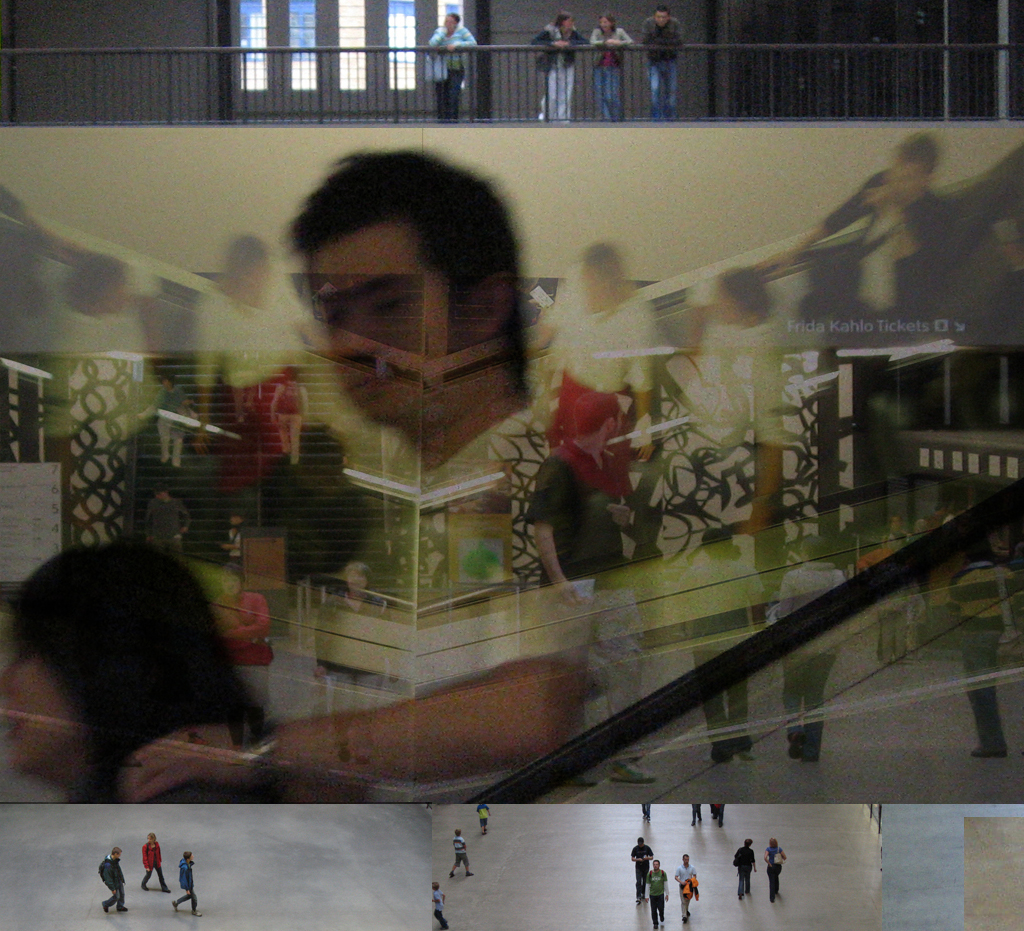 |
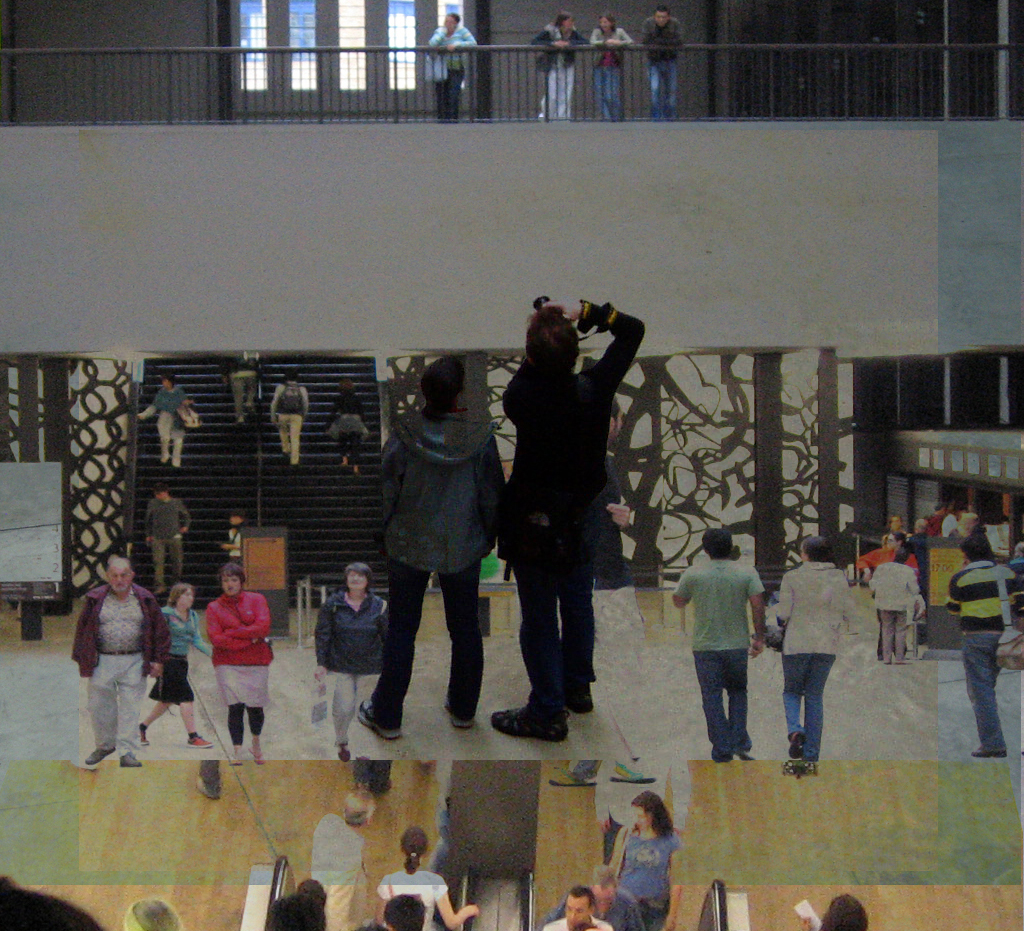 |
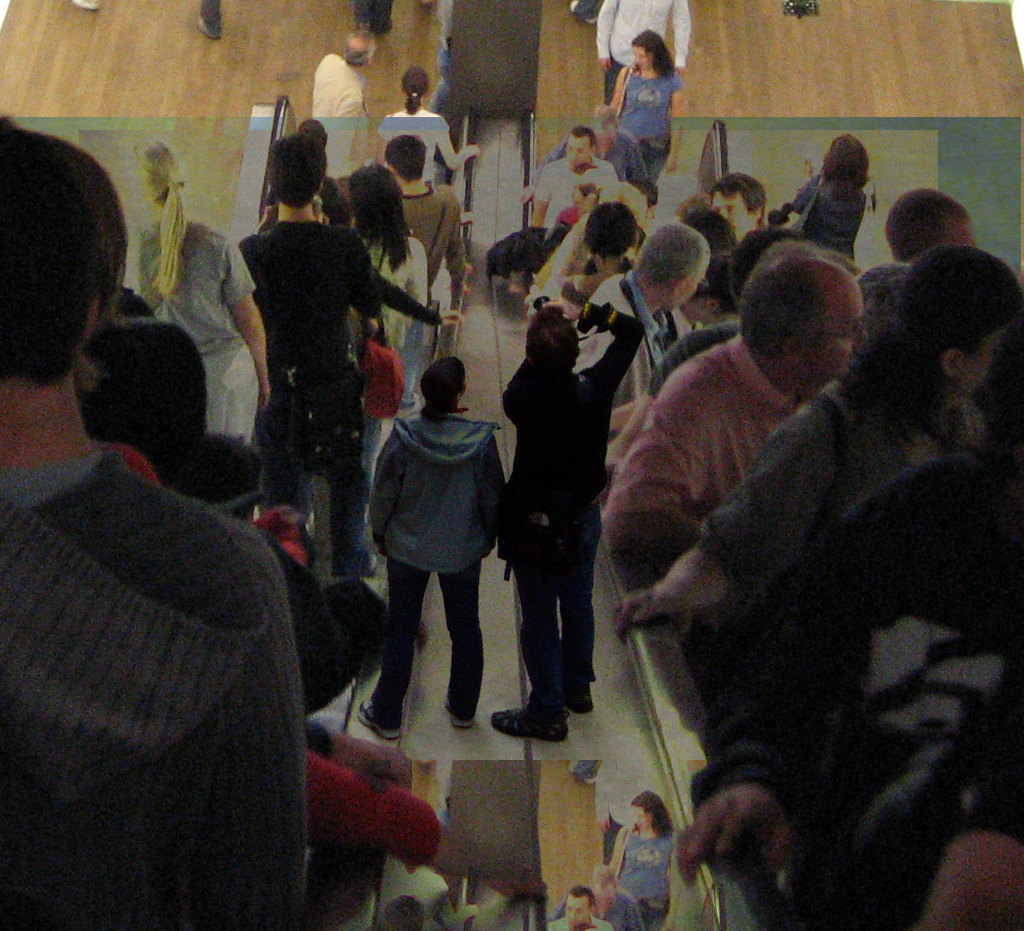 |
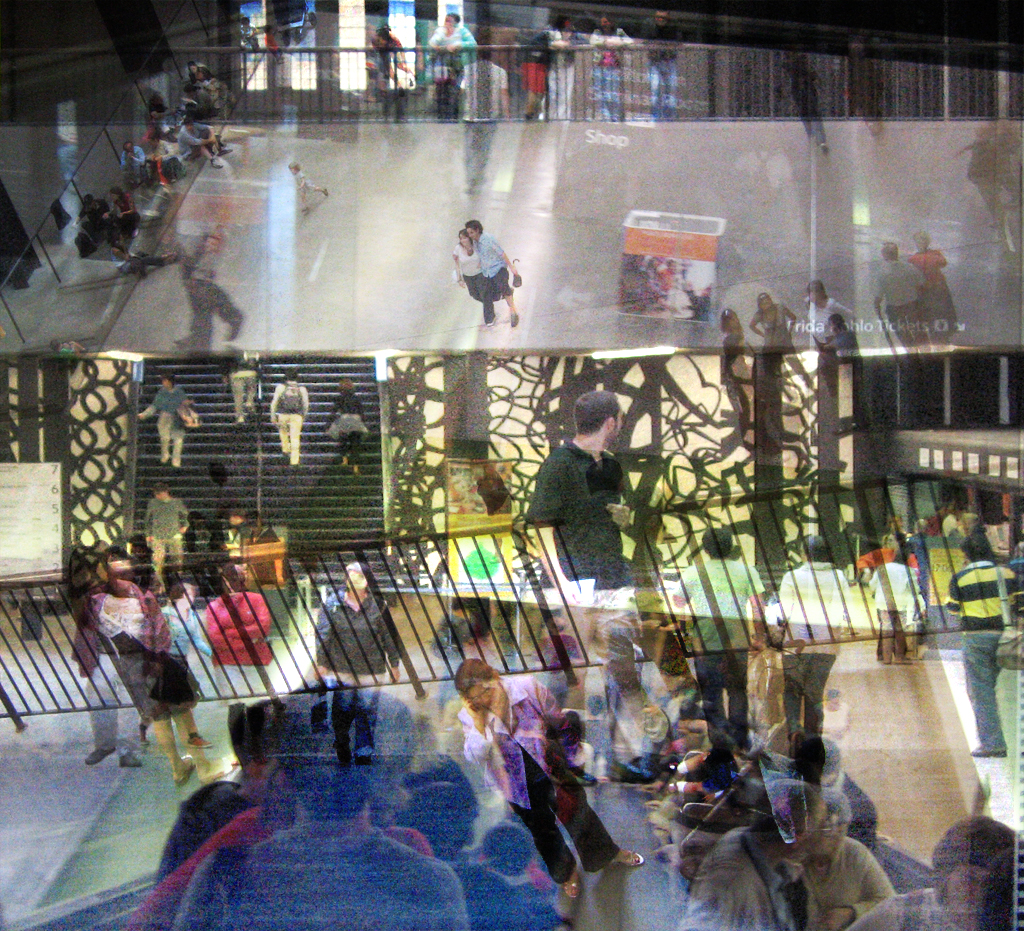 |
Above image show first version mixer software used in another project called Public Domain in 2006 hete in Nottingham
Collecting data and exhibited back in the gallery. 2008 Here at Plymouth Arts Centre.
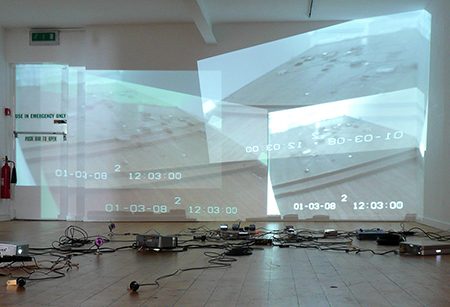 |
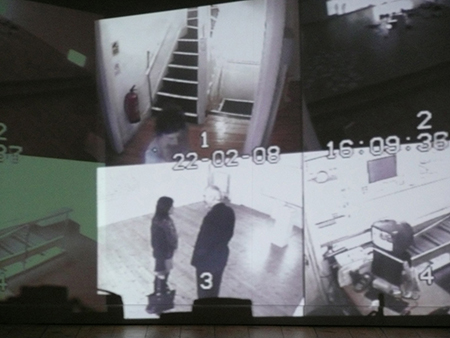 |
Collecting CCTV and exhibiting them back in the gallery. 2008 (Visitors to A Gallery)
Made using Stanza software from crowds. see Parallel Reality series. Impact
Public Domain is a cross disciplinary project, involving art and new technologies is experimental form. This will benefit interactive and interface design, fine arts and wireless sensor networks. Stanza's prototypes and artworks help answer questions about user interaction and create version for types of interfacing with live audiences and real spaces. This kind of investigation through experimental practice based research, new technologies, discourse and debate is part of long term thinking about strategies for audience engagement, visitor experience and sustainability within an ever diminishing public purse. Creative and marketing staff in public spaces are asking how does user interaction support the brand. They ask again how the users act back, can we use this agency in the space. Public Domain demonstrates this agency. Questions about qualitative analysis of data in gallery space. For example, ‘Taking Part’, a survey of cultural engagement states; “The Arts Council set out to understand the range of complex, interrelated factors that influence cultural consumption and participation patterns.“ On the other hand, the Arts Marketing Association (AMA) 2008 states: (10) “Arts organizations need to learn how to read and understand 'why' people engage or don't engage with their work on an ongoing basis if they are to continue to exist and thrive". The Tate Encounters: Research in Process (March 2008); Andrew Dewdney asks; “who comes and what is the experience of the user in the museum”. Andrew posed this question in the seminar, “how do the users act back, can we use this agency in the space”?
Public Domain provides evidence of visitor experience from within an artist’s perspective, from within public debate about user engagement, interaction and feedback previously un addressed in the seminars and conferences named above. The gallery (or museum) is turned into an artwork and the visitor (or audience) into collaborators. Precedent In previous work I focused on the data space. I now aim to focus on the body within the data space. I am now re-mediating the body to ask the question what is the shifting experience of the body and to the body in these new social spaces. I try to exploit the changing dynamics of space as a source for creativity and create meaningful artistic metaphors. I utilize new technologies and integrate new media artworks into the public domain as part of this ongoing research into the visualization of environments. In essence I am researching data as a medium for creativity and how meaningful experiences may result. The mixing of data and information services allows a “mash up” of ideas an organic form of art within social spaces. This remediation might allow a new social interaction and a new openness in public domain space. The re-contextualizing of data can also allow new public interactions, and new informational services, onto mobile phone, kiosks as well as to online virtual worlds and new output devices. Public Domain offers novel solutions for agency or user feedback that were not discussed in this series of seminars. It may be that subjectivities are changed in the process of fleeting experience but the use of agency would need further cultural analysis which would be part of the public seminar output. The data collected will be formatted into XML feeds online so that it can be interpreted to make the artwork visualizations and speculate on other possible uses. These feeds can further be used to merge the real and the physical space of the museum both by placing data online and creating online visualizations and then using the changing data in the gallery space to trigger physical events or artworks that can be located anywhere. Surveillance. By using CCTV in the gallery we can see what happens if we open up this system. How are the notions of privacy opened up? Analyse visitor flow via various algorithms in the system and potentially creating new software. Focus on what happens in the public space and our relationship to one another and the premise of “trust” within the interactive and social process? Make a CCTV algorithm for aesthetic tracking. The AMA 2008 conference raised similar questions with the answers are being posed from an arts marketing viewpoint. I would like to reframe these questions ands pose them from that of new creative models and emergent spaces from a creative perspective. By “asking” where people go and why, what people look at, what artworks they engage with and the qualitative data that can be gathered using the technologies I propose, the experience of the user space can be richly informed. Most audience user interaction material is to give additional and often educational informational services were users carry PDA’s that give extra commentary, not to re-use reform as a new experience or artwork. The Public in West Bromwich embedded RFID to making artworks but not to speculate on how it can affect the experience of the space. Though I have indicated that visitors can be thought of units of data, it is also possible to “re-mediate” the body in the data space in order that a new, emergent, social space is created. New technologies will monitor the space to track public interactions and provide “interpretative” and the cluster of visitors within the gallery. The visitors become the performers whose movements can be tracked. There hasn’t been much work using existing CCTV networks in buildings trying to expand these networks for cultural purposes, they are by and large employed for surveillance. Artists in this area tend to focus on the recorded image as film, or as separate isolated installations. This work will focus on the new patterns that can be disclosed by new embedded algorithms and how that can support our research context, that of a real time user experience across the whole gallery. I believe the discourse, conclusions, and visualizations, arising from this programme will be of value to a wide general audience. Other bodies which might benefit from this speculative research (and consequential data) include other artists and arts organisations, curators, and architects. Outputs The first outputs are prototype artworks, using real data as mediated responses to the environment. They will be displayed to the public. For example one experiment will be interactive real time tracking of the visitors to a gallery; this will be visualized and these traces will be used to create time maps of interactions and this can be shown on displays back inside the gallery and online through the website. The I will develop meaningful ways of visualizing data output, which are responsive to emerging research findings. Why is the proposal timely? The proposal is timely because: It offers different and novel creative solutions that synergize audiences with the arts spaces they inhabit. it recognizes that arts spaces are increasingly becoming entertainment spaces It enhances the quality of visitor experience, however fleetingly, in the moment of that experience. |
Using surveillance in the gallery to remeditate the body in the space and make new works
disclaimerSteve Tanza. Stanza artworks images and texts all rights reserved. The copyright for any material published on this website is reserved. Any duplication or use of objects such as images, diagrams and texts is not permitted without Stanza's written agreement. This project was submitted to the AHRC in 2009 also sent the The Whitechapel Art Gallery and Tate Modern in 2008. (C) Stanza 2008 . All artrists rights reserved. Support Artworks Visitors To A Gallery - Referential Self, Embedded . 2008 http://stanza.co.uk/cctv_web/index.html Gallery, Invisible Agency and Cultural Behaviours http://stanza.co.uk/gallery/index.html |
